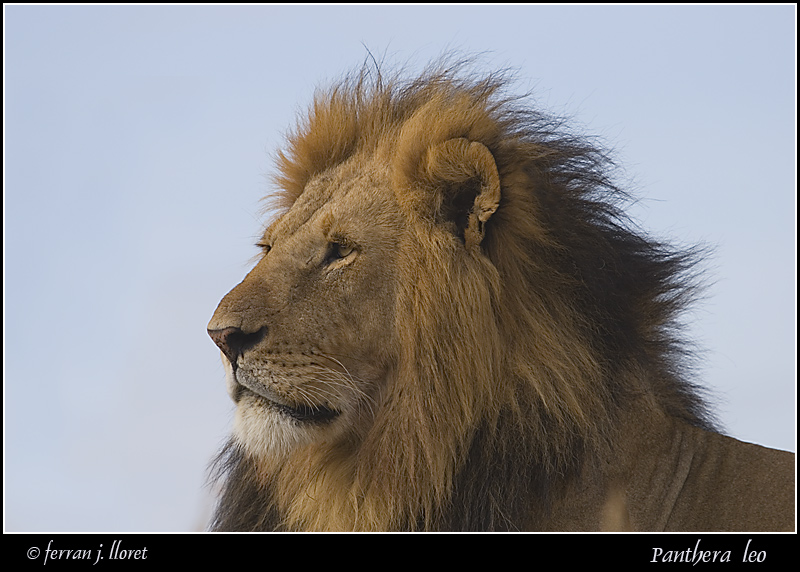The lion (Panthera leo) is a mammal of the family Felidae and one of
four "big cats" in the genus Panthera. The lion is the second largest cat, after the tiger. The male lion, easily recognized by his mane, weighs between 150-225 kg (330-500 lb). Females range 120-150 kg (260-330 lb).[2] In the wild, lions live for around 10–14 years, while in captivity they can live over 20 years. Though they were once found throughout much of Africa, Asia and Europe, lions presently exist in the wild only in Africa and India (where they are found only in the Sasan-Gir National Park).
In historic times the habitat of lions spanned the southern parts of Eurasia, ranging from Portugal to India, and most of Africa except the central rain forest-zone and the sahara-desert. Around the beginning of the current era they died out from Western Europe and they had become extinct in Greece by AD 100. In the Caucasus, their last European outpost, lions were found until the 10th century. Between the late 19th century and early 20th century they also became extinct from North Africa and Middle East. Now, most of the population lives in eastern and southern Africa, and their numbers are rapidly decreasing, estimated as between 16,000 and 30,000 living in the wild, down from an estimated 100,000 in the early 1990s. The population is even more in jeopardy, because the remaining populations are often geographically isolated from each other, which causes inbreeding. [1]
The Asiatic Lion (Panthera leo persica), which in historical times ranged from Turkey to India through Iran (Persia) and from Caucasus to Yemen, was eradicated from Palestine by the Middle Ages and from most of the rest of Asia after the arrival of readily available firearms in the 18th century. In Iran the last lion was shot in 1942. The subspecies now survives only in and around the Gir Forest of northwestern India. About 300 lions live in a 1412 km² (558 square miles) sanctuary in the state of Gujarat, which covers most of the forest. Their numbers remain stable.
Until the late pleistocene lions were also found in the Americas and in northern Eurasia. The most famous of these prehistoric subspecies were the European Cave Lion (Panthera leo spelaea) and the American lion (Panthera leo atrox), (not to be confused with the mountain lion or puma).
Information source
IUCN information
Photographed in dry grassland of the Maasai Mara National Reserve, Juliol de 2006.
|
